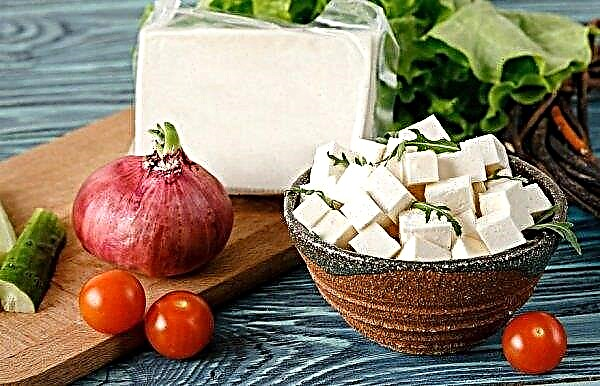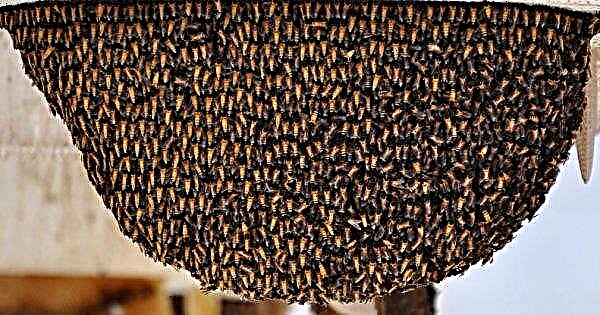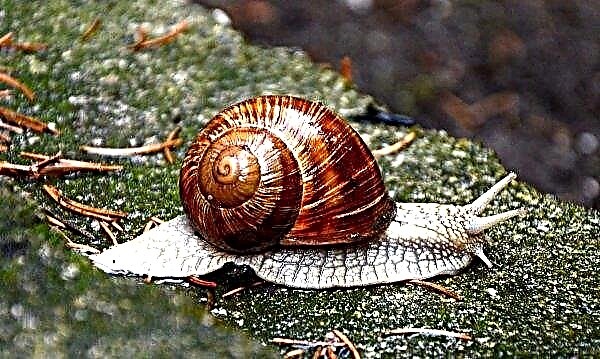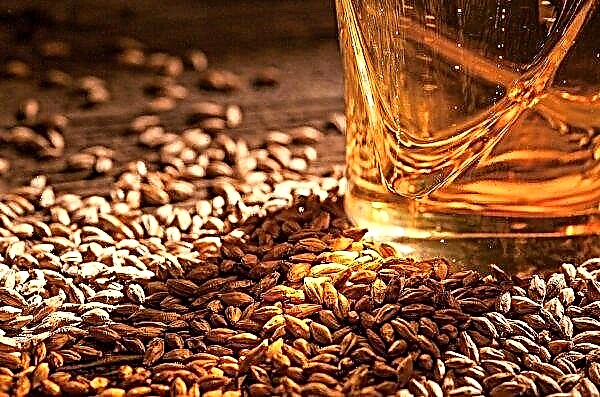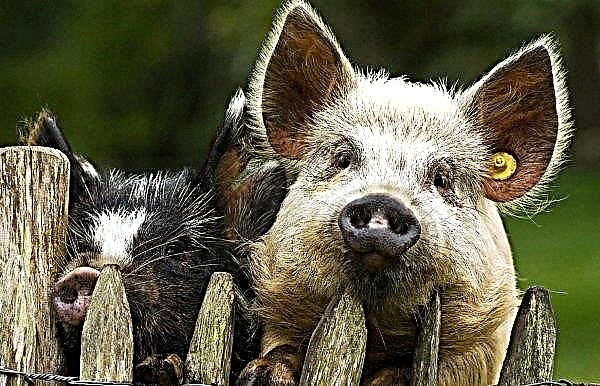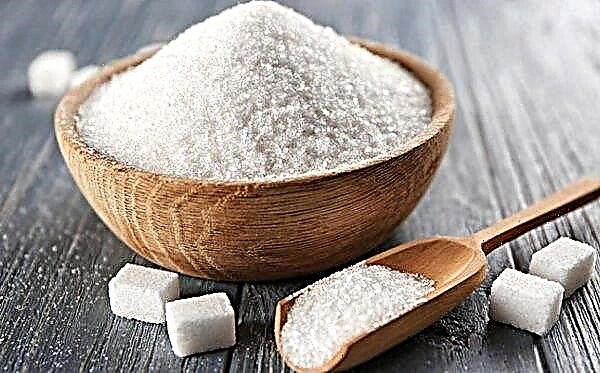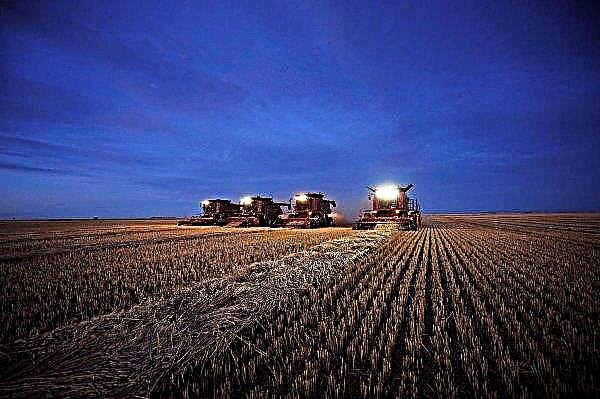Cabbage Larsia F1 has proven itself on the farm fields. The hybrid attracts the attention of gardeners with high productivity and other features that will be discussed in detail below.
Description and characteristic
Larsia F1 - one of the modern hybrids of white cabbage from the concern Seminis.
The main characteristics and indicators of this vegetable are as follows:
- flat-headed, oval-round head;
- color is white, with a green tint, on a cut - white;
- a head of cabbage is dense and smooth, homogeneous inside with thin veins;
- short stump;
- outer leaves are dark green, with a waxy coating;
- the size of the leaf outlet is average;
- average head weight of 4–6 kg, maximum 8 kg;
- productivity of 240–280 kg / ha.

The hybrid belongs to medium-late-ripening vegetables and the average time of its cultivation in the open field is 110–115 days, while by the 80th day the heads of cabbage are suitable for cutting and further processing. The taste qualities of a vegetable already at the time of harvest are at a high level, which compares it favorably with those varieties that gain taste and crispness only during long-term storage.
Did you know? A head of cabbage is a kind of plant bud that, after wintering, bears fruit in the form of seed pods.
Advantages and disadvantages
- The advantages of the hybrid are as follows:
- high stable yield;
- excellent market performance of heads of cabbage;
- resistance to diseases, including thrips;
- does not crack;
- long storage on the vine and after harvesting;
- universal application (fresh and processed, for starter and pickles).
Optimal growing time
Sowing dates depend on the climatic conditions of a particular region. It is recommended to start sowing seed material, usually in early spring (the last weeks of March). In the southern regions, transplantation into open ground can be carried out until the month of July, if climatic conditions do not interfere with harvesting in mid-autumn.
Video: Cabbage Larsia F1
Growing rules
The agricultural technology of Larsia F1 hybrid has no special requirements and coincides with the basic rules for the cultivation of white cabbage.
Seed selection and preparation
For the cultivation of hybrid crops, the selection and purchase of seed material is of paramount importance, since only from the seeds of a proven producer can a plant with desired properties be obtained.
Important! F1 hybrid crops do not retain their characteristics in seeds harvested by hand from planted plants. To harvest the next year, seeds need to be bought again.
Usually, it is recommended to soak the seeds before sowing in order to increase their germination and disinfect. However, branded seeds are most often sold with processed fungicides. They are painted in bright colors and do not require additional processing before sowing.
If the seeds are not painted and there is no corresponding warning on the bag, you can carry out the following actions:
- Place the seeds in a 3% sodium chloride solution for 10 minutes, and then collect those that have sunk to the bottom. The saline solution must be washed off, and the selected seeds should be dried immediately.
- For disinfection, place the seeds in a strong solution of potassium permanganate or a solution of crushed garlic (30 g per 1 cup of water) and leave for an hour. After processing, rinse the seeds with clean water and dry.
- For preliminary hardening, soaked seeds should be kept in the refrigerator at + 1 ... + 2 ° C for one day.

Growing seedlings
For growing seedlings, you can buy ready-mixed soil in a store or garden center, as well as prepare the soil yourself in the following proportion:
- one part of humus and sod land;
- 1 tbsp. l ash per 1 kg of soil mixture.
The earth must first be sanitized with a potassium permanganate solution or by calcination in an oven.
Important! Do not use land for seedlings from those beds where cruciferous crops grew in order to avoid possible infection of seedlings with characteristic diseases.
For seedlings, you will also need a box or a special plastic container, and for the second stage, after a dive, you will need individual containers for each plant. Before sowing, the soil must be abundantly watered, and the next hydration is performed after the emergence of seedlings. This technique is the prevention of the "black leg" on the shoots of cabbage.
Cabbage is a cold-resistant plant and a temperature of + 18 ... + 20 ° C will be enough for fast seed germination. To avoid excessive elongation, cabbage seedlings must be kept at low temperatures, about + 8 ° C, especially at night. After a week, the temperature is increased to + 12 ... + 15 ° C. If necessary, seedlings are illuminated with special lamps, providing it with a 12-15-hour light day.
The first seedlings are thinned so that each seedling has an area of about 2 cm². Watering the seedlings should be very moderate at room temperature. The pick is started when 1-2 real leaves appear, which corresponds to approximately a life time of 10 days. The transplant is carried out in the same soil mixture, while the seedlings are buried to cotyledon leaves. If the roots of the plant are very long, they are pruned by a third. Seedlings grown without picking, at this time it is necessary to thin out again, leaving intervals of 5-6 cm.
Seedlings of cabbage need additional top dressing according to this scheme:
- a week after a dive, 1 g of superphosphate and 2 g of potassium fertilizers and ammonium nitrate are added to 1 liter of water. This mixture is enough for about 50 seedlings, which should be pre-watered;
- after 2 weeks, the amount of additives per 1 liter is doubled;
- 2-3 days before planting, the seedlings are fertilized with a solution containing 8 g of potash fertilizers per 1 liter of water, and 5 g of superphosphate and 3 g of nitrate are added.
Site preparation
The site for growing crops should be light and fertile. The culture shows the best yield on loams with a high percentage of humus with a slightly acidic or neutral soil reaction. The best predecessors for cabbage are carrots, onions, cucumbers and peas. Do not grow cabbage after corn, and also return the vegetable to the same place. Again, you can plant cabbage in the garden only after 3-4 years.
Flat cabbage is necessary for cabbage, and landing on a ridge is recommended in moist lowlands.
Fertilizers are applied to the soil during autumn or spring preparation of the bed, and you can also add fertilizer to each well when planting:
- 500 g of humus;
- 1 t. Nitrophoski;
- 2 tbsp. ashes.

Transplanting seedlings into the ground
10-12 days before transplanting, seedlings are hardened, gradually accustoming to low temperature and direct sunlight. On the first day, in the room with cabbage, a window is opened for 3-4 hours, then the containers are taken out to the balcony and, as a result, left on the street for daytime. Before the first rays of the sun, plants shade slightly to avoid burns.
A week before planting, watering is significantly reduced or completely stopped, which allows to slow down plant growth. In the evening before planting day, seedlings are abundantly watered. Landing is best done on a cloudy day or in the afternoon in sunny weather.
Late ripe cabbage is planted with an interval of 70 × 70 cm. Each seedling should be deepened by the first real leaves and compress the soil around. Seedlings are watered immediately after planting and, if there is no rain, the next day.Plant care
Care for planting cabbage consists in controlling humidity and correct hilling, as well as timely top dressing.
Watering rates
Proper watering is the key to obtaining a high yield, since cabbage is a water-loving plant and a lot of water is needed to form large heads of cabbage. At the same time, excessive waterlogging can lead to stunted vegetable growth.
Important! Flooding of the root system within 6-12 hours leads to the beginning of its death!
There are three ways to water:
- The easiest option is along the furrowsHowever, this requires a smooth relief and does not give uniform moisture. When furrowed, it is difficult to moisten the roots of young seedlings after planting. This method is not suitable for sandy and sandy soils.
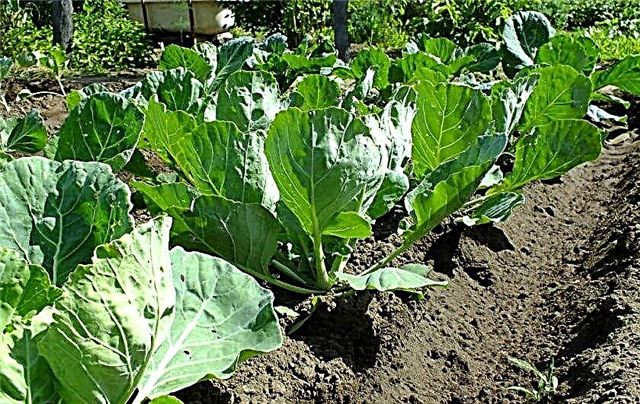
- Sprinkling Suitable for the site with any terrain and with any soil. This method allows you to adjust the desired rate, regulate humidity and refresh plants in the heat. The disadvantage of this method is the crust after irrigation, unevenness in strong winds and significant energy consumption.

- Drip irrigation most rational, allowing you to save water and supply it only to the plant. However, this method has the highest cost, as well as demanding water quality.
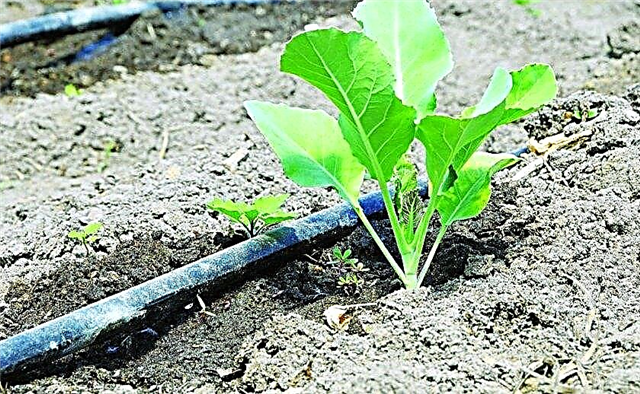
Watering is best done in the morning or in the evening, while the desired water temperature is about + 20 ° C. In hot weather, refreshing sprinkling is also recommended (morning or evening). Watering is reduced during the heading of a head of cabbage.
Fertilizer application
The amount of fertilizer required for the proper vegetation of the vegetable depends on the fertility of the soil and its preparation before planting. The most effective are top dressing during the period of maximum leaf growth and during the formation of the head of cabbage.
The recommended feeding schedule is as follows:
- 2 weeks after transplanting, seedlings are fed with mullein solution (1:10, 500 ml per 1 seedling). This top dressing can be skipped if fertilizers were added to the hole during planting;
- the second feeding is carried out a month after planting and is identical in composition to the first;
- the third feeding occurs 2 weeks after the second. 30 g of superphosphate per 10 l of water are added to the same mullein solution and poured 1–1.5 l per bush;
- with the same solution, a fourth top dressing can be carried out after 20 days.

Loosening and hilling
When the seedlings have taken root well, weeding is carried out and the first loosening. The depth of cultivation for the first time is 4-5 cm. After a week, the process is repeated to a depth of 6-8 cm. Subsequent cultivation is carried out until the foliage of neighboring plants closes to a depth of 8-10 cm.
Hilling allows you to get additional roots and it is carried out 25 days after transplanting seedlings in open ground. It is performed after watering or top dressing, digging the soil to the first real leaves. Since Larsia F1 has a short stump, a second hilling is not required.
Did you know? Sour cabbage appeared in China and was originally steeped in rice wine. It was this dinner that fed those who built the Great Wall of China in the III century BC. e.
Pests and diseases
This hybrid is resistant to thrips and bacteriosis. Heads of cabbage are rarely affected by caterpillars, which is especially noticeable when planting different species in neighboring beds.
When cruciferous flea attack, use processing "Intavir".
Possible cabbage diseases are often associated with improper soil preparation and non-observance of crop rotation principles.
A plant can get these diseases:
- keel - a fungal disease, spread by spores and lives in acidic soil. The main preventive measure is deoxidation of the soil to 5.5–6.5 pH. It also helps treat seedlings a week before transplanting with 3% Bordeaux liquid;
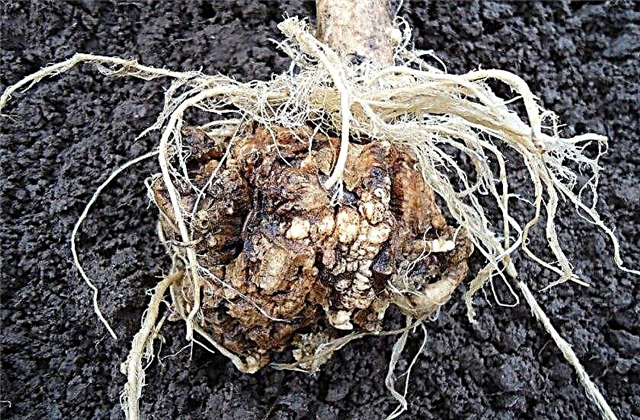
- mildew forms a gray coating on the underside of the leaves, and yellow spots may appear on the front side. It is important not to overmoisten the plantings, and diseased plants are treated with 1% Bordeaux fluid.
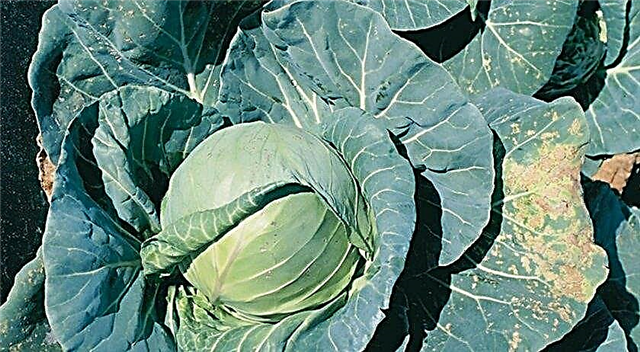
Harvesting and storage
The hybrid is perfectly stored on the vine, allowing you to stretch the harvest. After harvesting, heads of cabbage are stored for 4–8 months.
Harvesting is best done in dry weather, cutting off the heads with a sharp knife. If storage in suspension is planned, the stump is left long, in other cases they are cut to 2-3 cm. The two upper covering sheets are left for additional protection of the head.
During the initial sorting, the following vegetables are rejected for long-term storage:
- underdeveloped heads of cabbage ("catch-up");
- mechanically damaged and cracked;
- frostbitten or with traces of pests.
Optimum storage conditions are as follows:
- temperature from 0 ° C to + 2 ° C;
- humidity 85–95%;
- lack of mold and fungi;
- monthly airing.
Subject to the above conditions, cabbage can be placed for long-term storage:
- in a box or box, while the heads of cabbage are placed in one layer and do not allow them to touch;
- on shelvesplacing the vegetables with a stalk up and wrapping them in paper;
- in sand, for which the stump is completely cut off, and the heads of cabbage are laid in layers and sprinkled with dry sand. You can also stick a head of cabbage with a stump (at least 8 cm) in a layer of sand 20 cm deep;
- stackshaving put together special forms from the rails that will ensure optimal ventilation for the cabbage;
- hanging each head out separately for the stump to the ceiling.

When stored in a refrigerator, cabbage is placed in a freshness zone or vegetable compartment at a minimum temperature. A head of cabbage is wrapped in film or paper.
Cabbage Larsia F1 can be eaten fresh, and is also one of the best varieties for pickling and pickling. White cabbage is a delicious filling for pies and dumplings, used to make soups and side dishes.
This hybrid is recommended for cultivation both on farms, and on personal farms. With traditional agricultural technology, cabbage has a number of undeniable advantages over most varieties.









